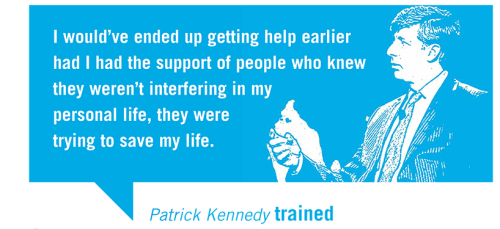Be 1 in a Million.
In just ten years, Mental Health First Aid has become a full-blown movement in the United States—more than 600,000 Mental Health First Aiders strong and growing every day. In 2016, the National Council for Behavioral Health is making it a priority to train more first aiders than ever before. Our vision? One million Mental Health First Aiders in the U.S.
I have decided to become a Mental Health First Aider. This choice is very personal to me.
My dear father passed away November 4, 2015. My entire life he battled major depressive disorder. Family members have told me that he suffered with this disease since childhood. As a young child, I could not understand why my dad was so different than my friends dads. It wasn't until I was older that I realized he couldn't control his mood without medication. Unfortunately, he did not start treatment for this until his mid 70's. I was grateful that the last few years of his life he was full of joy and love. I treasure those memories. I know we were happy that he never attempted to take his own life but that isn't always the case. This is why I have decided to be 1 in a million! For my dad and for those who struggle everyday.
WHAT IS MENTAL HEALTH FIRST AID?
Mental Health First Aid is an 8-hour course that teaches you how to identify, understand and respond to signs of mental illnesses and substance use disorders. The training gives you the skills you need to reach out and provide initial help and support to someone who may be developing a mental health or substance use problem or experiencing a crisis.MENTAL HEALTH FIRST AID MATTERS.
Most of us would know how to help if we saw someone having a heart attack—we’d start CPR, or at the very least, call 9-1-1. But too few of us would know how to respond if we saw someone having a panic attack or if we were concerned that a friend or co-worker might be showing signs of alcoholism.Mental Health First Aid takes the fear and hesitation out of starting conversations about mental health and substance use problems by improving understanding and providing an action plan that teaches people to safely and responsibly identify and address a potential mental illness or substance use disorder.

When more people are equipped with the tools they need to start a dialogue, more people can get to the help they may need. Mental Health First Aiders can even save lives.
If you would like more information on becoming a Mental Health First Aider please visit http://www.mentalhealthfirstaid.org
Sincerely,
Lora










